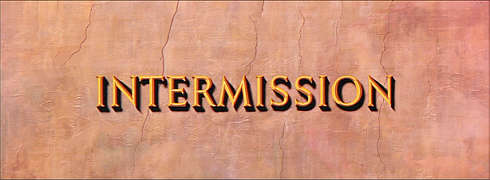
Kubrick edits dramatically across time to a similar effect throughout the film. A terrifyingly bleak, but not altogether false, statement. With that single cut closing out the Dawn of Man chapter, Kubrick is communicating that all we need to understand about humanity’s origin is that we learned to kill each other. Later, when the ape beats another to death, the film jumps ahead millions of years with one of the most iconic and remarkable cuts in all of cinema. It places the initial moment of mankind’s beginning at the discovery of efficient violence, ironically celebrating it with a triumphant fanfare. Without a single spoken word, the scene is loaded with imagery and emotion. As sandy debris shatters all around the ape, Kubrick intercuts images of wild beasts collapsing to their deaths against the motif of ‘Also sprach Zarathustra’. Take the scene where the ape realizes that he can use an animal bone to smash things. Despite all this unparalleled sophistication, or perhaps even because of it, Space Odyssey resonates on a primal level first, cerebral second: we understand the emotional logic of what is transpiring on screen before we consciously register it. Everywhere else, Kubrick manages to convey all the information and emotion he requires through cinematography, editing, and sound design alone. There’s some dialogue, yes, but only when the narrative sparingly demands it. Conceiving the film, Kubrick desired to illustrate his narrative through visuals versus conventional cinematic storytelling, and it clearly shows. I found myself totally lost in the film’s world.Ģ001 demands as much from its viewer.

#2001 overture and intermission music movie
I myself have never been so fully immersed in a theater setting before, a fact I realized twice that night- the first at intermission, the second after the movie had ended. From the primitive conflict in ‘Dawn of Man’ to the psychedelic light festival in ‘Jupiter and Beyond the Infinite’, 2001 keeps you on the utmost edge of your seat throughout its entire runtime. In its first two minutes, there is more cinematic spectacle than anything in the twenty Marvel slogs. Seeing a movie in the 20th century was a live event, not a passive activity.Ģ001: A Space Odyssey is such an iconic piece of American cinema that there’s an immediate danger for one to forget the tremendous power it wields over an audience.

This simple moment the movie takes, to ground its audience in the mindset of actively experiencing a work of art, not only makes all the difference in the world but highlights the glaring contrast between 20th and 21st century cinema. Instead of a tedious stream of never-ending previews, distracting from the feature film, we were greeted with quiet musical atmosphere to set up the mood of the film.

It’s understandable why the audience was confused about the overture. This is experiencing a film, I thought to myself for the next three hours.

I had a smile wide across my face for those first two minutes, and genuine chills when the title appeared. Music began playing, a piece called ‘ Atomosphères‘ by composer György Ligeti, as we all stared ahead at the obscured silver screen.įinally, the curtains parted and the iconic opening of 2001: A Space Odyssey commenced, ‘ Also sprach Zarathustra‘ soaring over the audience in a triumphant roar. “Isn’t the movie starting?”, they wondered. Most of the audience looked around in confusion, sure that a mistake had been made. As I sank into my seat and the lights dimmed, the crimson curtains at the very front of the AFI Silver Theater began to close.


 0 kommentar(er)
0 kommentar(er)
